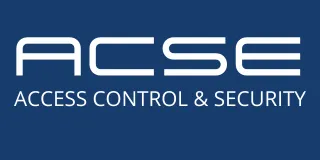
Smart Access Control: The Future of Secure and Convenient Entry Systems
As technology continues to evolve, smart access control systems are transforming the way homes, businesses, and industrial facilities manage security. Traditional keys and manual gate controls are quickly being replaced by advanced solutions that enhance security, convenience, and efficiency.
From biometric authentication to cloud-based access management, the future of access control is shifting towards smart, automated, and remotely manageable solutions. This article explores the latest advancements in smart access control, the benefits of integrating modern technology, and the key considerations for property owners and installers when upgrading their access systems.
The Evolution of Access Control: From Keys to Smart Technology
For decades, access control has relied on physical keys, numeric keypads, and card-based entry systems. While these methods have been effective, they come with security risks and operational limitations. Lost keys, copied access cards, and outdated security codes pose serious threats to homes and businesses.
Smart access control technology solves these issues by incorporating advanced authentication methods, remote access management, and real-time monitoring capabilities. Instead of relying on physical credentials, digital access solutions provide secure, customizable, and trackable entry for authorized users.
Key Features of Smart Access Control Systems
The latest smart access control systems combine hardware and software to deliver seamless and secure entry management. Some of the most prominent technologies include:
1. Biometric Authentication
Biometric security eliminates the risks associated with lost or stolen credentials by using unique human features to grant access.
Fingerprint scanners ensure that only authorized individuals enter a property.
Facial recognition technology is becoming a popular option for high-security environments.
Iris and voice recognition provide an additional layer of biometric security.
2. Mobile Access Control & Cloud-Based Management
Mobile technology has revolutionized access control by allowing users to unlock gates with a smartphone app. These solutions offer:
Remote access management, enabling property owners to grant or revoke access from anywhere.
Cloud-based logs, which record who entered and when, providing real-time monitoring.
One-time passcodes or temporary access permissions for visitors or service personnel.
3. RFID and Proximity Card Readers
While biometrics and mobile apps are gaining popularity, RFID (Radio Frequency Identification) and proximity cards remain essential for commercial and industrial facilities.
RFID systems allow touchless entry, improving convenience in high-traffic areas.
Card readers can be integrated with security cameras, creating a layered security approach.
4. Smart Intercom & Video Verification
Modern access control systems are now integrating high-resolution cameras and two-way intercoms for real-time identity verification.
Video intercoms let users see and speak with visitors before granting entry.
AI-powered systems can detect unauthorized access attempts and trigger alerts.
Advantages of Smart Access Control for Property Owners and Businesses
Upgrading to a smart access control system offers numerous benefits for homeowners, business owners, and property managers.
1. Enhanced Security & Risk Reduction
Eliminates security risks associated with lost keys or copied access cards.
Provides real-time alerts and access logs, improving incident response.
Supports multi-factor authentication (MFA) for higher security levels.
2. Increased Convenience & Operational Efficiency
Allows for keyless entry, reducing the need for physical access credentials.
Enables remote access control, so users don’t have to be on-site to grant entry.
Simplifies access management for multiple users, especially in commercial buildings.
3. Better Integration with Smart Home & Security Systems
Syncs with surveillance cameras, alarm systems, and automation platforms.
Works with voice assistants like Alexa or Google Assistant for hands-free operation.
Allows customizable access schedules for employees, tenants, or guests.
Considerations for Installing Smart Access Control Systems
When upgrading to a smart access control system, homeowners and businesses should evaluate the following factors:
1. Compatibility with Existing Infrastructure
Not all smart access control systems work with older gate automation equipment. Property owners should:
Ensure that the gate operator is compatible with new technologies.
Choose a system that integrates with existing security platforms.
2. Cybersecurity & Data Protection
As smart access systems rely on cloud storage and wireless connectivity, protecting sensitive data is essential. Best practices include:
Using encrypted communication protocols to prevent hacking attempts.
Enabling multi-factor authentication to strengthen security.
Ensuring regular software updates to protect against cyber threats.
3. Power Supply & Backup Solutions
Smart systems require a reliable power source to function efficiently. Options include:
Battery backups to keep access control operational during power outages.
Solar-powered access systems for remote locations with limited electricity.
Future Trends in Smart Access Control
With rapid advancements in AI and IoT (Internet of Things), the future of smart access control looks promising and highly automated. Some expected trends include:
AI-Powered Access Control – Systems will use machine learning to detect anomalies in access patterns.
Blockchain for Identity Management – Future systems may store credentials securely on decentralized networks.
Advanced Voice Recognition – Gated communities and commercial facilities may adopt voice-based authentication.
By staying ahead of these trends, property owners and businesses can implement cutting-edge security solutions that provide lasting protection and convenience.
Final Thoughts
Smart access control is revolutionizing security, convenience, and efficiency for both residential and commercial properties.
Homeowners benefit from seamless, keyless entry and remote monitoring.
Businesses gain enhanced security and better visitor management tools.
Installers can offer state-of-the-art security solutions that integrate with modern gate automation systems.
By adopting biometric security, cloud-based management, and AI-driven access control, property owners can ensure a safer and more convenient future.

